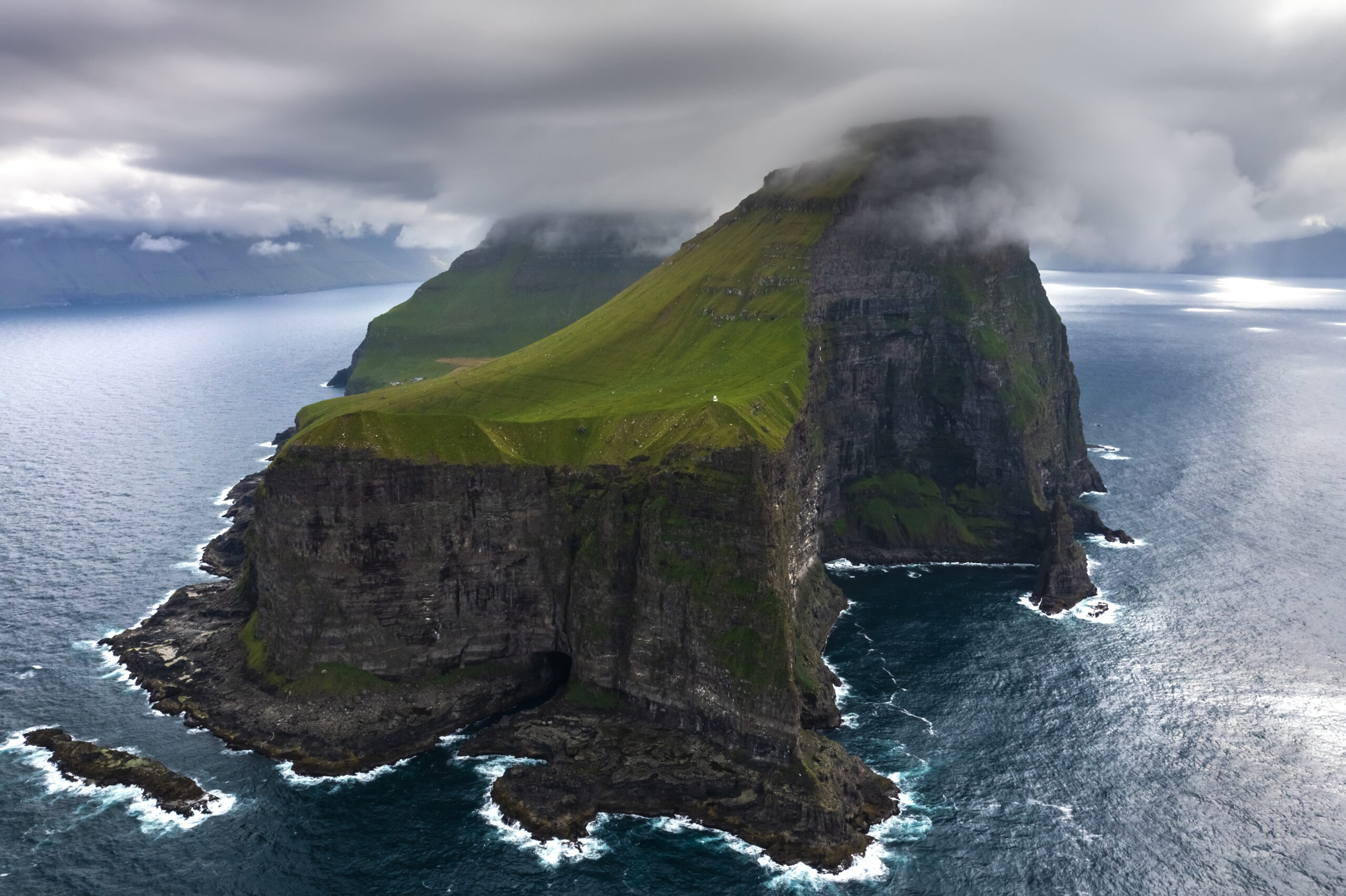Every corner feels untouched, every horizon wild. But this raw beauty comes with a logistical twist—how exactly do you move through such a scattered and rugged landscape? You’re not alone if you’re wondering how to get around the Faroe Islands. This guide unpacks everything you need, blending practical travel insight with local knowledge to help you journey through these untamed islands smoothly, safely, and with a true sense of discovery.
Getting to the Faroe Islands
Most travelers arrive in the Faroe Islands by air. Vágar Airport (FAE) is the only airport serving the islands on Vágar Island. The national carrier, Atlantic Airways, operates regular flights from Copenhagen, Billund, Reykjavik, and Edinburgh, with seasonal flights from several other European cities. The airport is small and efficient, and upon arrival, you’ll find car rental services, public transport connections, and taxis.
Alternatively, you can reach the Faroe Islands by sea with Smyril Line’s MS Norröna, a car and passenger ferry that travels between Hirtshals in Denmark and Seyðisfjörður in Iceland, stopping in Tórshavn, the capital of the Faroe Islands. This scenic ferry journey is perfect for travelers who wish to bring their vehicle or enjoy a leisurely voyage across the North Atlantic.
Traveling Between Islands
Despite the rugged terrain and remote setting, the Faroe Islands boast a remarkably well-developed infrastructure. A network of tunnels, bridges, causeways, ferries, and buses makes traveling between islands easier than expected. Some of the most impressive infrastructure includes undersea tunnels connecting Streymoy, Eysturoy, and Vágar islands, making it possible to travel between them by car in minutes.
In addition to roads and tunnels, ferries are vital in connecting smaller or more isolated islands. For example, you must take a boat to reach Suðuroy, Sandoy, or Mykines. Mykines is particularly famous for its puffin colonies, only accessible via ferry or helicopter. It’s worth noting that ferry schedules can change due to weather, and booking in advance is highly recommended during summer.
Car Rentals and Driving
Renting a car is often considered the best way to explore the Faroe Islands, especially if you want to visit less-traveled areas or explore at your own pace. Car rental agencies are available at Vágar Airport and in Tórshavn, offering a range of vehicles including compact cars, SUVs, and increasingly, electric cars. Booking early is essential during the peak tourist season, particularly from June to August.
Driving in the Faroe Islands is relatively straightforward for visitors from Europe or North America. The roads are well-maintained, and traffic is minimal compared to mainland Europe. You’ll drive on the right-hand side, and headlights must remain on at all times—even during the day. One of the unique aspects of driving here is the frequent presence of sheep on or near the roads. If you hit one, it is legally required to report the accident to the police.
The islands have many tunnels, some of which are one-lane only. When driving through these, pay attention to the pull-out bays that allow oncoming vehicles to pass. Newer undersea tunnels like the Eysturoyartunnilin even feature roundabouts beneath the ocean floor. Some of these tunnels charge tolls, and rental agencies may include the cost in your agreement or ask you to settle it afterward.
Public Transport: Buses and Ferries
If you’re not planning to rent a car, you can still explore many islands using public transport. The bus and ferry system is operated by Strandfaraskip Landsins (SSL). The Bygdaleiðir buses connect towns and villages across the archipelago, while ferries serve the outlying islands. Timetables are reliable, though services are less frequent on weekends and public holidays.
One exceptionally budget-friendly option is the SSL Travel Card, which gives you unlimited access to all buses and most ferries for four or seven consecutive days. This pass is handy for travelers who want to see as much as possible without worrying about individual ticket purchases.
In Tórshavn, the city offers free public transportation via its red buses, known locally as Bussleiðin. These buses connect key parts of the city and are a convenient way to get around without needing a car or taxi.
Exploring by Bicycle or Foot
Cycling through the Faroe Islands can be a rewarding experience for the adventurous. The quiet roads, panoramic views, and ever-changing weather create a unique challenge for experienced cyclists. However, because of the steep terrain, frequent wind, and limited shoulder space on roads, cycling here is best suited for those with high fitness and cycling experience. Bicycle rentals are available in Tórshavn and a few other towns.
Many travelers also enjoy hiking as a primary way of exploring. Popular hiking routes include the trails to Lake Sørvágsvatn’s “floating lake” illusion, the sea stack Risin og Kellingin near Eiði, and the path from Bøur to Gásadalur overlooking Múlafossur waterfall. While some hikes can be done independently, others require permits or payment to landowners, so it’s wise to research your route in advance or join a guided hike.
Taxis and Local Transport Services
Taxis are available in most major towns, particularly Tórshavn, but they are not as readily available in rural areas. It’s best to book in advance by phone or through your hotel. Fares can be relatively expensive compared to other European cities, especially for longer trips. Some services offer fixed prices between popular destinations like Vágar Airport and Tórshavn.
For those staying longer or planning a mix of hiking and public transport, combining taxis for short legs of your journey with buses or ferries can offer a flexible travel solution.
Seasonal and Weather Considerations
Weather plays a significant role in travel planning in the Faroe Islands. Rain, fog, and strong winds are common, and ferry schedules or flights can be delayed or canceled with little notice. Always check the latest weather updates and transport notices before setting out. SSL’s official website provides real-time updates on bus and ferry routes.
Summer is the most popular time to visit due to extended daylight hours and milder temperatures. Transport services are more frequent during this period, and all roads are typically accessible. In winter, the Faroe Islands take on a quieter, more introspective atmosphere, with fewer tourists and a more limited transport schedule—but with the possibility of snow-covered landscapes and glimpses of the northern lights.
Getting around the Faroe Islands is part of the adventure. Whether you’re behind the wheel of a rental car, aboard a remote island ferry, or gazing out of a bus window at windswept fjords, the journey itself becomes as memorable as the destination. With thoughtful planning and an understanding of the available transportation options, exploring these magical islands becomes possible and highly enjoyable.
By embracing the local infrastructure—one that blends practicality with an appreciation for the landscape—you’ll discover that the Faroe Islands are far more accessible than their remote location suggests. Prepare well, stay flexible with your plans, and let the rhythm of the islands guide your journey.
For official information on travel times, public transport passes, and tunnel tolls, visit SSL.fo.
Recent Comments
Categories
FREE TEXT
Read all the latest updates on the Arctic, whether its volcanoes, strikes, USA buying Greenland or whatever the Gods themselves think up.
RECENT POSTS
CATEGORIES
CATEGORIES
- Blogs (23)
Post Widget
The Unapologetic Firewater of Iceland – Brennivín
The volcanic eruption in Grindavik
Kirkjufell the Mountain – Grundarfjörður
Social Media Widget

A Free Guide
Get a free videocall before and after your self drive booking.

Arctic Expertise
All our tours and operators are vetted to ensure the best experience

Local & Sustainable
Made by locals with locals. Skip the conglomerates.

Secure payment
Your payment information is processed securely and encrypted.




